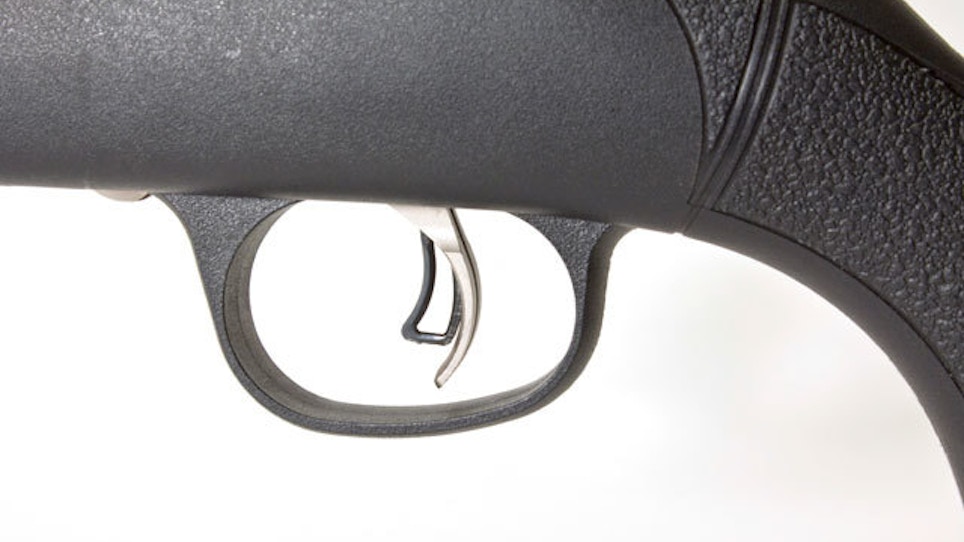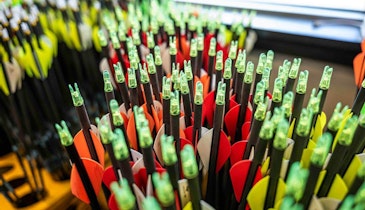The key to good rifle shooting is having the best possible interface between the rifle and the shooter. And while humans interface with several parts of a rifle, none is more important than with the trigger.
Triggers are finally getting the attention they deserve. Back when rifles were all made by hand, the craftsmen building those rifles knew the importance of a good trigger and knew how to make one. Modern rifle manufacturers still know these things. The problem is good triggers are expensive to make. Put a good trigger on a rifle and it raises the cost. And, since most Americans are rather frugal creatures, they often opt for the less expensive rifle and worry about the trigger later.
Some manufacturers have figured this out, and their stock with the gun-buying public has risen in value. Savage might be the best example. Its AccuTrigger, which has been around for several years now, really changed the game as far as triggers on factory rifles are concerned. A few years ago, Marlin followed Savage's lead and now offers a similar go switch Marlin calls the Pro-Fire.
These Savage and Marlin triggers are a safe alternative to triggers with a light pull weight because they essentially copied the trigger safety-lever mechanism from the Glock pistol. By installing a center lever/lock on the trigger that must be fully depressed, they eliminated some of the liability concerns. This, of course, is another reason many factory rifles have poor triggers — manufacturers worry that a "hair" trigger might lead to an accident, which will cost them money. Never mind that all firearms trigger-related accidents can be avoided by exercising proper gun safety.
Liability is an issue but not the bottom line. If it costs a company an extra $25 to ensure each rifle has a good trigger when it leaves the factory, the increase in price to the consumer is about four times that much — a rifle that sells for $599.95 now sells for $699.95. Hunters looking to buy a new rifle as well as a new scope, mounts and ammunition can find a lot of other things to spend $100 on.
This is exactly why Timney Triggers remains in business. Timney offers aftermarket triggers for most common sporting rifles. And Timney triggers are very fine triggers. Most of Timney's triggers retail on either side of a hundred bucks; they are easy to install and they are adjustable. If a hunter buys a rifle and all his related accessories, he can come back a month or two later, spend another hundred bucks and update his trigger about as easily as he can download an update for his favorite smart phone app.
For rifles for which there are no aftermarket trigger options, you can take your rifle to a qualified gunsmith for a trigger job. The cost is about the same as a Timney trigger, and a good gunsmith can fix most triggers. The downside to this approach is it might void the warranty on your rifle. You also might have an issue if you have a problem with the trigger. You'll have to return to the gunsmith or find another if the one that did the work on your rifle is no longer in business. For this reason, I buy rifles with good triggers or rifles for which Timney makes a trigger. Problem solved. Right? Not totally.
Get A Good Trigger
Getting a good trigger on a rifle is mostly nothing more than a matter of spending money. The real question is, what makes a good trigger? Most shooters believe a good trigger has a very light pull weight. A good trigger can have a light pull weight, but it is not a necessity. The amount of force you must put on the trigger is important to making a good shot, but you probably don't need to go as minimal as you might think.
I have a general rule when it comes to rifle triggers — the amount of force that has to be applied to the trigger should never be more than half the weight of the rifle. That does not mean a 12-pound rifle is OK with a 6-pound trigger, but it for sure means a 7-pound rifle is no good with a 7-pound trigger. Most deer-hunting rifles weigh in the neighborhood of 7 to 9 pounds with scope and all attached. This means the trigger pull weight should never exceed 3½ to 4½ pounds on most hunting rifles.
The reason for this should be obvious — if you have to apply a force to the trigger that equals the rifle's weight, there will be no way to keep the rifle from moving when you pull the trigger. In truth, with a trigger that is more than half the rifle's weight, you will very likely still get substantial movement when the trigger is pulled. This is particularly true if the overtravel — the distance the trigger moves after releasing the sear — is excessive.
The triggers on most of my rifles release the sear after somewhere between 2 to 4 pounds of force has been placed on the trigger. Don't misunderstand this to mean the trigger pull is inconsistent. Quite the contrary, actually. One of the most important characteristics of a good trigger is that it requires the exact same amount of force to cause it to release every single time. What I am saying is that I have the trigger pull weight on my rifles set to something between 2 to 4 pounds, depending on how much the rifle weighs and how well I interface with the rifle in other ways.
For example, I have an extremely lightweight model 20 Short from New Ultra Light Arms (NULA) chambered in .30 Remington AR. This rifle, with a 1.5-5X Leupold riflescope, weighs 5.25 pounds and fits me perfectly. The Timney trigger on this rifle is set to break at 2 pounds. Like many custom bolt-action hunting rifles, NULA rifles come standard with Timney triggers.
Another of my rifles, a Marlin 1895 lever action, has a trigger pull weight of 4 pounds. Weight, with a Leupold Scout scope attached and a full magazine of ammunition, is about 8 pounds. Out of the box the trigger was a bit heavy for me, but a spring kit from Brownells fixed this in just a few moments.
Pull weight is important, but it is not the most critical aspect of a trigger. A good trigger has a repeatable and not-too-heavy pull weight, but it also has minimal overtravel. Another important aspect of a good trigger is that it be as smooth as a bedtime kiss. When you pull the trigger there should be no grinding or binding throughout the entire trigger stroke.
Marlin and Savage have figured this out on their bolt-action rifles. Both companies even offer these good triggers on their affordable youth rifles. For most other rifles, I suggest you turn to Timney or another reputable aftermarket trigger manufacturer. Making a shot on a monster whitetail can be a difficult task in the best of conditions. No reason to make it harder just because you were too lazy or cheap to get a good trigger on your rifle.
Trigger Terms
Pull Weight: The amount of weight that must be applied to the trigger to make the rifle fire. Should not be more than half the rifle weight.
Takeup: The distance the trigger moves before meeting the point where the maximum force needed to make the rifle fire must be applied. Not a bad thing and can be an added safety precaution.
Creep: Movement of the trigger after takeup but before it releases the sear. Creep could also be defined as trigger movement under maximum pressure. This is a bad thing and is generally the cause of inconsistent triggers and bad shots.
Overtravel: Rearward movement of the trigger after the point where the sear was released. Most every trigger will have overtravel. A lot of overtravel combined with a heavy pull weight is a recipe for bad shooting.






